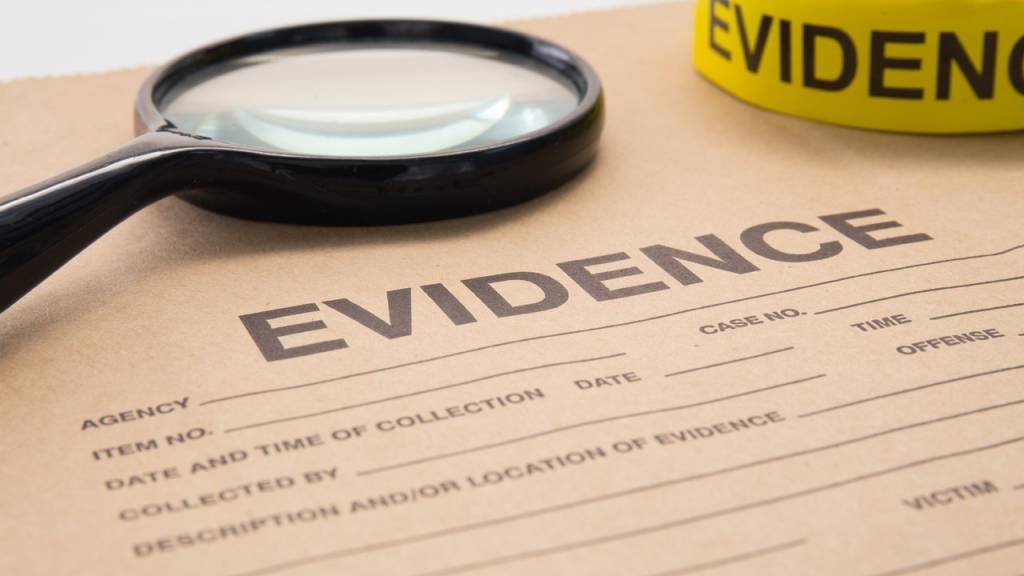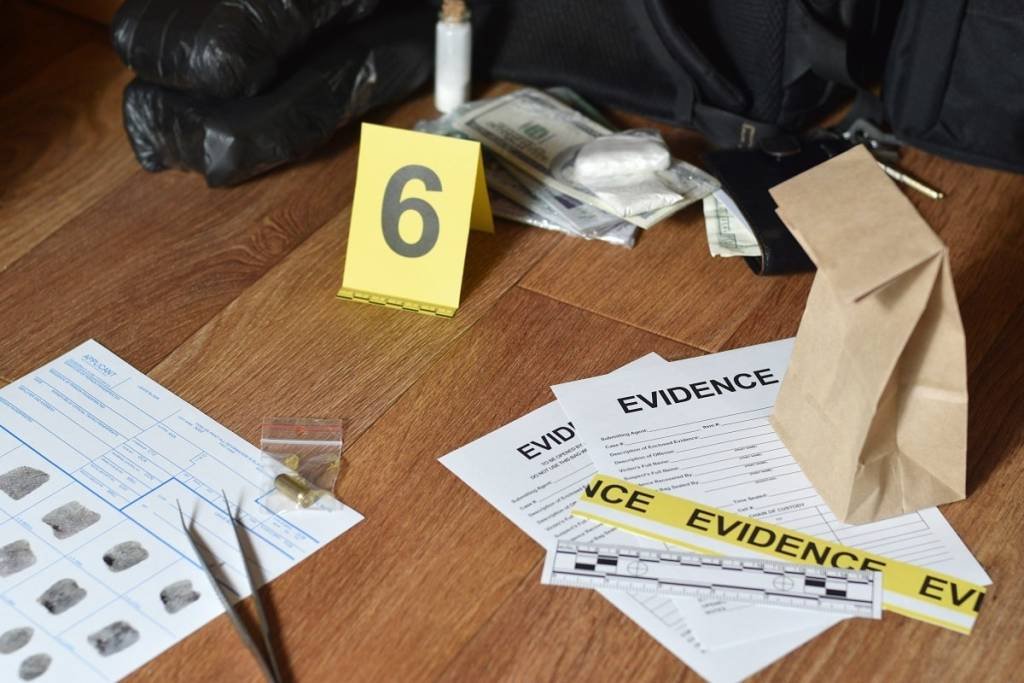In the intricate tapestry of legal and investigative realms, the Science of Evidence stands as the linchpin that can unravel mysteries, shed light on truths, and ultimately deliver justice. From courtroom dramas to real-life detective stories, this scientific approach to gathering and presenting evidence plays a paramount role in substantiating claims, uncovering hidden facts, and guiding decisions. As we delve into the intricacies of the Science of Evidence and its profound significance, we embark on a journey that unveils the meticulous artistry behind piecing together a compelling case. In this article, we explore the multifaceted dimensions of evidence, its various forms, and how private detectives harness the power of the Science of Evidence to craft a strong foundation for legal success. Join us as we navigate through the corridors of truth, where the Science of Evidence reigns supreme and narratives are shaped by the precision of investigation.
Understanding the Role of a Private Detective
The role of a private detective is a cornerstone in the Science of Evidence, where meticulousness and expertise converge to unearth truths hidden beneath the surface. In a world often shrouded in ambiguity, private detectives serve as intrepid guides who navigate through intricacies, collecting and analyzing evidence to bring clarity to complex situations. Let’s explore the multifaceted responsibilities that define the role of these modern-day sleuths:
1.1 Defining the Private Detective’s Mandate:
- Delve into the legal framework that governs the work of private detectives.
- Highlight the distinctions between private detectives and law enforcement officials.
- Showcase the diverse scenarios where private detectives are engaged, from personal to corporate investigations.
1.2 Unveiling Specialized Skills:
- Detail the specialized skills and qualities that set private detectives apart.
- Discuss the significance of discretion, attention to detail, and adaptability in their work.
- Provide anecdotes illustrating how these skills contribute to successful evidence collection.
1.3 The Art of Information Gathering:
- Explore the methods employed by private detectives to gather crucial information.
- Discuss the importance of surveillance, interviews, and research in their investigative toolkit.
- Offer insights into how private detectives ethically navigate the acquisition of information.
1.4 Role in Evidence Preservation:
- Explain how private detectives play a crucial role in preserving and documenting evidence.
- Showcase instances where their expertise in evidence preservation has proven pivotal in legal proceedings.
Types of Evidence Gathered by Private Detectives
In the realm of the Science of Evidence, private detectives emerge as adept artisans, weaving together a tapestry of diverse evidentiary threads. These threads, carefully collected and meticulously analyzed, form the backbone of a strong case. Let’s delve into the various types of evidence that private detectives expertly gather:
2.1 Physical Evidence:
- Explore the significance of tangible objects, traces, and artifacts as physical evidence.
- Discuss how private detectives collect, document, and preserve physical evidence from crime scenes or relevant locations.
- Provide examples such as fingerprints, DNA samples, and weapon fragments to illustrate the role of physical evidence.
2.2 Documentary Evidence:
- Examine the importance of documents, records, and written materials in investigations.
- Detail how private detectives track down and verify documents to build a comprehensive case.
- Highlight scenarios where contracts, emails, or financial records have served as critical documentary evidence.
2.3 Testimonial Evidence:
- Define the role of eyewitnesses, interviews, and statements as testimonial evidence.
- Discuss the art of conducting effective interviews to extract accurate and reliable information.
- Present cases where private detectives skillfully obtained testimonial evidence to corroborate or refute claims.
2.4 Digital Evidence:
- Uncover the digital frontier of evidence collection, including electronic records, communications, and online activities.
- Explore the techniques used by private detectives to extract and analyze digital evidence from devices and online platforms.
- Showcase instances where digital footprints have played a pivotal role in uncovering crucial information.
2.5 Surveillance Evidence:
- Delve into the world of surveillance as a cornerstone of evidence collection.
- Explain the methodologies employed by private detectives during surveillance operations.
- Provide real-world examples of how surveillance evidence contributes to constructing a compelling narrative.
Legal and Ethical Considerations

In the intricate landscape of the Science of Evidence, private detectives tread a fine line between uncovering truth and upholding the principles of justice and ethics. As guardians of integrity, they navigate a complex terrain of legal boundaries and moral imperatives. Here, we delve into the crucial legal and ethical considerations that underpin the work of private detectives:
3.1 Adherence to Legal Frameworks:
- Examine the legal parameters within which private detectives operate.
- Highlight the importance of obtaining evidence through lawful means and respecting individuals’ rights to privacy.
- Discuss how private detectives collaborate with legal professionals to ensure compliance with local, state, and federal laws.
3.2 Ethics in Evidence Collection:
- Define the ethical standards that govern the conduct of private detectives.
- Explore the ethical dilemmas that may arise during evidence collection and how professionals address them.
- Provide insights into the moral responsibilities of private detectives when dealing with sensitive or confidential information.
3.3 Consent and Privacy:
- Discuss the significance of obtaining informed consent when gathering evidence from individuals.
- Examine how private detectives navigate scenarios where privacy concerns intersect with evidence collection.
- Illustrate the importance of balancing the need for evidence with respect for personal boundaries.
3.4 Dealing with Confidential Information:
- Highlight the handling of sensitive information and the importance of maintaining confidentiality.
- Discuss strategies employed by private detectives to secure and protect confidential evidence.
- Showcase real-world examples of how private detectives have maintained discretion while gathering evidence.
The Science Behind Evidence Collection
Evidence collection is a crucial aspect of various fields, including criminal investigations, forensic science, research, and more. It involves the systematic and careful gathering of information, data, or physical items that can provide insight, support claims, or establish facts. The science behind evidence collection encompasses various principles and techniques to ensure the accuracy, reliability, and integrity of the collected evidence. Here are some key aspects:
1. Locard’s Exchange Principle: Named after French forensic scientist Edmond Locard, this principle states that whenever two objects come into contact, there is an exchange of materials between them. In a crime scene context, this means that a perpetrator will leave behind traces of themselves (like DNA, fibers, or hair) and also pick up traces from the scene. Forensic investigators use this principle to identify and collect potential evidence.
2. Chain of Custody: Maintaining a strict chain of custody is essential to prevent contamination, tampering, or loss of evidence. This involves documenting the journey of evidence from the moment it is collected until it is presented in court. Properly documenting the chain of custody ensures that the evidence’s integrity is preserved, and its admissibility in legal proceedings is not compromised.
3. Crime Scene Protocol: Different types of evidence require specific collection methods to avoid cross-contamination and preserve their integrity. Crime scene investigators follow established protocols, including wearing appropriate protective gear, using sterile tools, and documenting the scene through photographs and notes. Different types of evidence, such as biological samples, physical items, or digital evidence, may require different collection techniques.
4. Preservation of Evidence: Certain types of evidence, such as biological samples, can degrade over time due to exposure to environmental factors. Proper packaging and storage are crucial to prevent deterioration. For example, biological evidence like blood or semen should be stored in airtight containers to prevent bacterial growth and DNA degradation.
5. Digital Evidence Collection: In the digital age, collecting electronic evidence, such as data from computers, smartphones, and online platforms, is equally important. Digital evidence must be collected using specialized tools and techniques to maintain its integrity and ensure that it is admissible in court. Hash values, timestamps, and metadata are used to verify the authenticity of digital evidence.
6. Documentation and Photography: Thorough documentation and photography are essential steps in evidence collection. Photographs help recreate the scene and provide a visual record of the evidence’s context and location. Detailed notes should accompany photographs to explain the significance of each piece of evidence and its location within the scene.
The Future of Evidence Collection

The future of evidence collection is likely to be shaped by advancements in technology, changes in legal and ethical considerations, and a deeper understanding of scientific principles. Here are some potential developments that could influence the future of evidence collection:
1. Technological Advancements: a. Digital Forensics : As digital technology continues to advance, the collection and analysis of digital evidence will become increasingly sophisticated. This includes the extraction and preservation of data from a wide range of devices, from smartphones and computers to Internet of Things (IoT) devices and cloud services.
b. Biometric and Genetic Evidence : Advancements in biometric and genetic technologies could lead to the collection and analysis of unique physiological markers for identification and forensic purposes. DNA analysis methods may become more rapid and accurate, allowing for quicker and more detailed identification of suspects or victims.
2. Remote and Automated Collection: a. Drones and Robotics : Drones equipped with cameras and sensors could be used to efficiently survey and document large crime scenes or disaster areas. Robots might be used to handle hazardous materials or navigate dangerous environments for evidence collection.
b. Remote Sensing : Satellite imagery, LiDAR, and other remote sensing technologies could play a significant role in evidence collection, especially in large-scale disaster response scenarios or environmental monitoring.
3. Artificial Intelligence (AI) and Data Analytics: AI algorithms could help analyze vast amounts of data quickly and accurately, identifying patterns, anomalies, or correlations that might be missed by human investigators. AI-powered tools could aid in image and video analysis, handwriting recognition, voice analysis, and more.
4. Virtual and Augmented Reality: Virtual reality (VR) and augmented reality (AR) could be used for crime scene reconstruction, enabling investigators to visualize and interact with virtual representations of the scene. This could assist in understanding spatial relationships and providing context to evidence.
5. Blockchain and Chain of Custody: Blockchain technology could enhance the security and transparency of the chain of custody by creating a tamper-proof digital record of each step in the evidence-collection process. This would help maintain the integrity of evidence and enhance its admissibility in legal proceedings.
6. Privacy and Ethical Considerations: Advancements in evidence-collection technology raise important ethical and privacy concerns. Striking a balance between collecting valuable evidence and protecting individuals’ rights and privacy will continue to be a challenge. Legal frameworks and guidelines will need to evolve to address these issues.
7. Interdisciplinary Collaboration: The future of evidence collection may involve closer collaboration between various fields, such as law enforcement, forensic science, computer science, data analytics, psychology, and more. Cross-disciplinary expertise will be crucial to handle complex cases effectively.
Conclusion
In conclusion, the science of evidence collection is a dynamic and evolving field that plays a vital role in various domains, including criminal investigations, forensic science, research, and legal proceedings. The systematic and meticulous gathering of information, data, and physical items is guided by established principles and techniques to ensure accuracy, reliability, and integrity. Key aspects of evidence collection include adhering to Locard’s Exchange Principle, maintaining a strict chain of custody, following crime scene protocols, preserving evidence through proper packaging and storage, and embracing advancements in technology like digital forensics, biometrics, AI, and more.
The future of evidence collection holds promise as technology continues to advance, enabling remote and automated methods, enhanced data analysis through AI and data analytics, and innovative approaches such as virtual reality and blockchain. However, ethical considerations and privacy concerns must be carefully navigated to ensure a balance between effective evidence collection and protecting individual rights.
As interdisciplinary collaboration and training become increasingly important, professionals in fields ranging from law enforcement to science and technology must work together to stay abreast of developments and ensure that evidence-collection practices remain both scientifically rigorous and ethically sound. By embracing innovation while upholding fundamental principles, the science of evidence collection will continue to contribute to the pursuit of truth, justice, and the rule of law.




